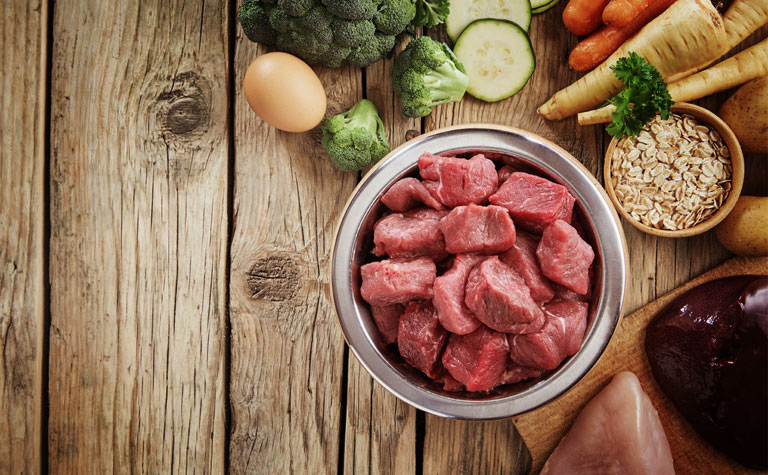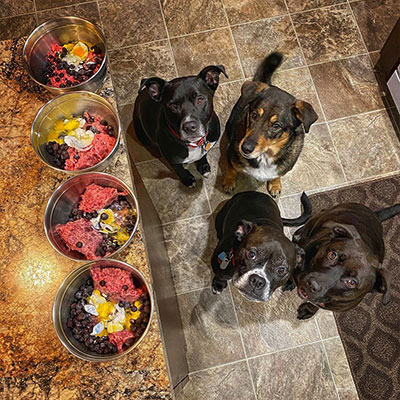
What's the deal with Raw?
A healthier immune system equals a healthier coat. Say goodbye to dry, flaky skin that leaves a white film on your hands when you pet your fur baby and say hello to a rich, shiny, and healthy coat.
Since dogs don't brush their teeth like we do, they rely on bones and a proper diet. Natural ingredients promote optimal oral health, cleaner teeth, healthier gums and fresh breath. Did you know that 80% of kibble fed dogs and 70% of kibble fed cats have significant oral health issues by the time they are 2-3 years old.
The number one allergen in dogs is grains. Most processed dog foods contain grains and starches which quickly convert in the body to sugars. This combination is very unnatural to a dogs biological diet. This often results in yeasty ears, flared up paws, runny eyes, joint issues and a gassy digestive system. For those dogs that suffer from yeast, please be aware that sugar feeds yeast! Raw has no fillers or grains - the way Mother Nature would feed our cats and dogs.
As humans, can you imagine eating nothing but cereal every meal every day? This is the life of a dog eating kibble. On a raw diet, the base of the meals are prepared in an 80: 10:10 ratio to provide amino acids, vitamins and minerals. A rotation of proteins are always recommended to ensure your dog's meals are balanced, nutritious, and exciting.
Raw feeding is essential to help your dog maintain consistent blood glucose levels for a much happier, healthier and well mannered fur friend. Most processed dog kibble contains high levels of sugar. Not only does this sugar feed disease it creates energy highs and lows that keep our fur babes out of balance.
It's quite simple, if more waste goes in, more waste comes out. It's one of the first noticeable improvements for new raw fed dogs. Not only is the amount much less, it's drier and easier to pick up.
If you left this waste over a few days it would biodegrade back into the earth as raw does not contain synthetics and fillers like processed kibble does. This allows for the body to easily absorb the greatest amount of natural nutrients without a load of unnatural ingredients left over. Meaty bones and bird proteins can account for the poop turning white, this is completely normal. Dark tarry stools are also normal when first switching to raw as well when switching proteins.
Kidney disease and urinary track infections run rampant in our pets today. Once upon a time cats were originally desert animals and were reliant on their food to provide their moisture intake. Dogs are generically built to consume high amounts of moisture foods. Dry kibble contains 10-12% moisture. Lack of moinsture in a diet can lead to dehydration and kidney issues, The digestive track needs moisture for breakdown nutrients and aid in proper digestion. The pets organ system also requires moisture as to carry out their role in digestion and immunity that affect all other body functions.


Fun Fact
The oldest dog recorded to have lived was 29 years and 5 months old cattle dog from Australia named Bluey. His owner Less Hall stated that “He lived on a diet of kangaroo and emu…basically a fresh raw food diet”.
The two oldest cats were owned by Jake Perry from Texas. One named Grandpa Rexs Allen lived to be 34 years old, and then there was Creme Puff who lived to be 38 years and three days. When asked what he did…Jake said “I just added fresh food to their diet”.

